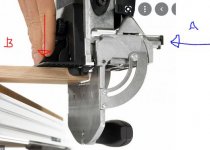Hi,
Pretty new to domino joining (I have the df 500) when cutting my mortise for my 16mm material. I make sure the size setting is set to 16 as per the instructions but I can’t see why my mortises aren’t in the middle of the material, it means nothing is lining up when I go to do a dry run. Any help would be much appreciated.
Thanks
Pretty new to domino joining (I have the df 500) when cutting my mortise for my 16mm material. I make sure the size setting is set to 16 as per the instructions but I can’t see why my mortises aren’t in the middle of the material, it means nothing is lining up when I go to do a dry run. Any help would be much appreciated.
Thanks

